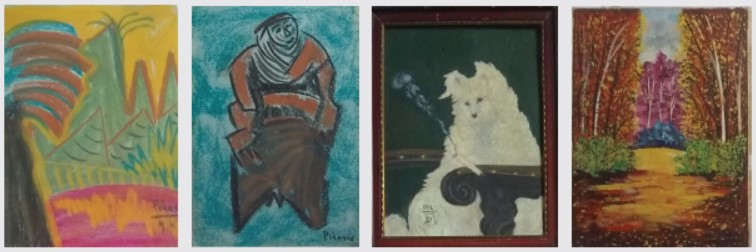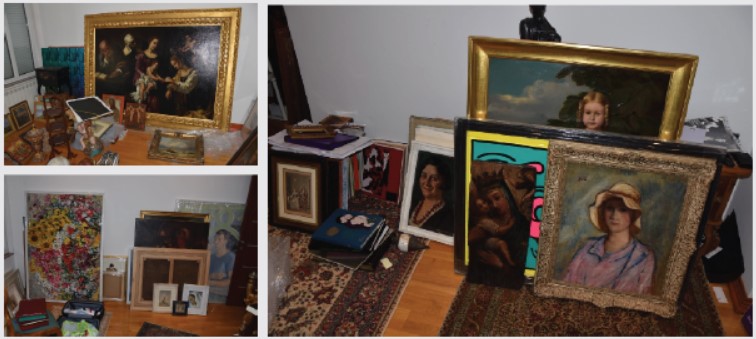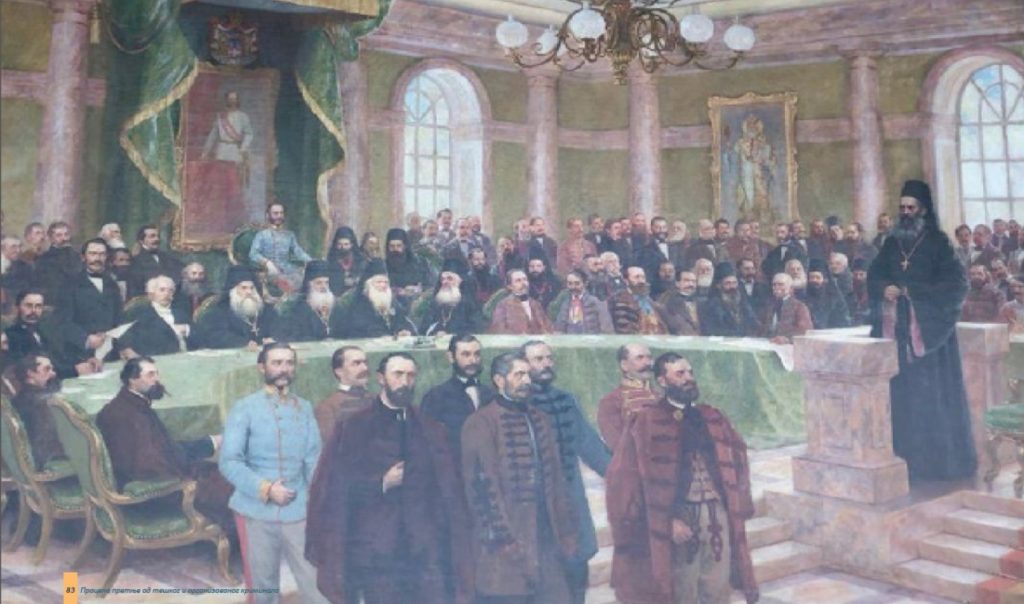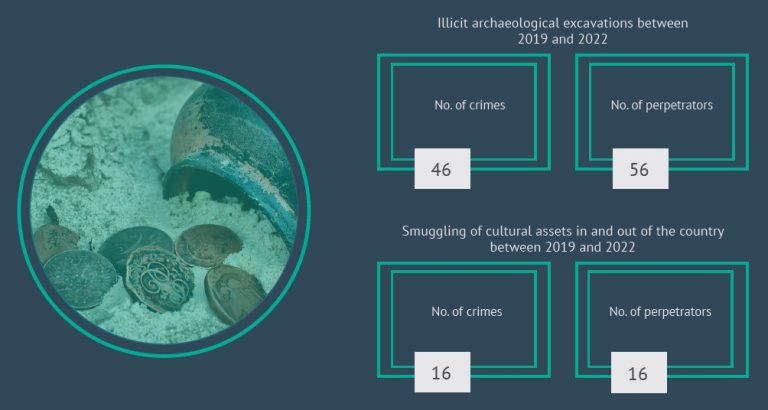Cultural goods crime
In addition to great material damage it causes, cultural goods crime also results in direct endangerment of cultural heritage.
It is manifested as an individual, ad hoc or organized criminal activity aimed at earning high proceeds. This type of serious or organized crime should be given the importance it deserves because of its gravity and consequences.
Interpol estimates say that, according to global prevalence, cultural goods crime holds a high place, right after the trafficking of drugs and weapons, which is why it needs to be given due attention.
Cultural assets are the works of material and spiritual culture which are of general interest and enjoy special protection. Cultural goods crime has specific manifestations and consequences, because cultural assets do not only have material value, but are regarded as priceless because of their importance for the community to which they belong. They are unique or rare and cannot be replaced or restored.
The sales value of illegally acquired cultural assets on the black market depends on several factors: the difficulty of expert evaluation and determination of whether they are original, level of the buyer’s education, period when they were created and territory from which they originate, exposure to the risk of detection during resale or purchase (unless they were stolen for a private collection), etc.
The advantages offered by modern technologies are used even in this type of crime, so in some cases these assets are sold through social media and online. On the other hand, the protection of cultural assets requires certain investments; this primarily refers to the technical security of museums, galleries and other facilities where the assets are kept. However, experiences from modern countries show that technical solutions do not guarantee complete safety since perpetrators are frequently very skilled, which means that even highly protected cultural assets are exposed to danger. Difficulties are encountered both in detecting these criminal acts and in proving them, which requires experts from different fields (art history, archeology, archive science, etc.), as well as the appropriate training of police and customs officers for the identification of such cases. This is frequently of utmost importance for the timely prevention of these criminal acts and detection of broader circumstances in which they have occurred.
Perpetrators can be individuals, ad hoc groups and groups with different levels of organization for which this is the main criminal activity. Organized crime against cultural assets has a clear international character and involves a number of perpetrators with specialized roles – direct perpetrators, smugglers, dealers, counterfeiters as well as experts of different profiles. Motives for this type of crime are usually financial gain, a desire to own certain objects of cultural or artistic value, or financing of other criminal activities.
In Serbia, due to its vast cultural heritage, there are different types of crime against cultural goods. One type never ceases, and these are thefts of paintings as part of the cultural heritage, and attempts to sell them or take them out of the country.
In recent years, illicit excavations have been conducted at archeological sites (resulting in their partial destruction). This was caused by a black market demand, which otherwise mainly stimulates crimes against cultural goods. Perpetrators are usually either inexperienced and unprofessional persons who cannot evaluate the excavated items correctly and sell them below the real value, or groups which have a very precise goal and which may include experts. There are also groups that conduct excavations in different parts of Serbia, and smuggle archeological artifacts with the intention of selling them on the illegal markets of some European countries. The illicit trade is also arranged online, within private groups. In addition to illicit excavation, archaeological artefacts can also be stolen from cultural institutions and private owners.

At the Batrovci border crossing, at the exit from Serbia to the Republic of Croatia, an attempt to smuggle four cultural heritage paintings was prevented in June 2021. The paintings were Autumn by French painter Henri le Sidaner (1862-1939), White Cat and Burning Cigarette (1512) by Austrian painter Albrecht Dürer and two paintings signed by Pablo Picasso, one of which was painted in 1971.

Some of the stolen paintings found in the apartment of one of the members of the organized crime group which had been stealing and selling paintings for a long time.

The arrest was made of OCG members who in 2021 tried to sell the 1901 oil on canvas painting The 1861 Annunciation Assembly in Sremski Karlovci, by Vlaho Bukovac.
The painting, which had been kept at the Dunđerski Castle, was the target of the criminal offense of aggravated theft together with three other paintings on November 28, 1993. The damage was caused to the Museum of Vojvodina in Novi Sad, which is in charge of the castle.
The painting, which has major cultural and historical importance, was exhibited in the castle ever since its opening to the public in 1968. OCG members offered it for EUR 600,000, together with counterfeited certificates that were supposed to „prove“ that it had been purchased at a legitimate auction in Cologne in 1996.
It was found in Zurich, at the gallery belonging to the wife of one of the OCG members. Two OCG members were arrested by the Swiss police, while two others were arrested in Belgrade. One of them had more than 260 paintings and sculptures in his possession.


Expected Future developments
► The criminal market demand for objects of cultural, artistic and historical importance will determine the level and manner of commission of this type of organized crime.
► Efficiency in fighting crimes against cultural and historical heritage will continue to be directly dependent, inter alia, on the level of training of police and customs officers and good cooperation with cultural institutions.


